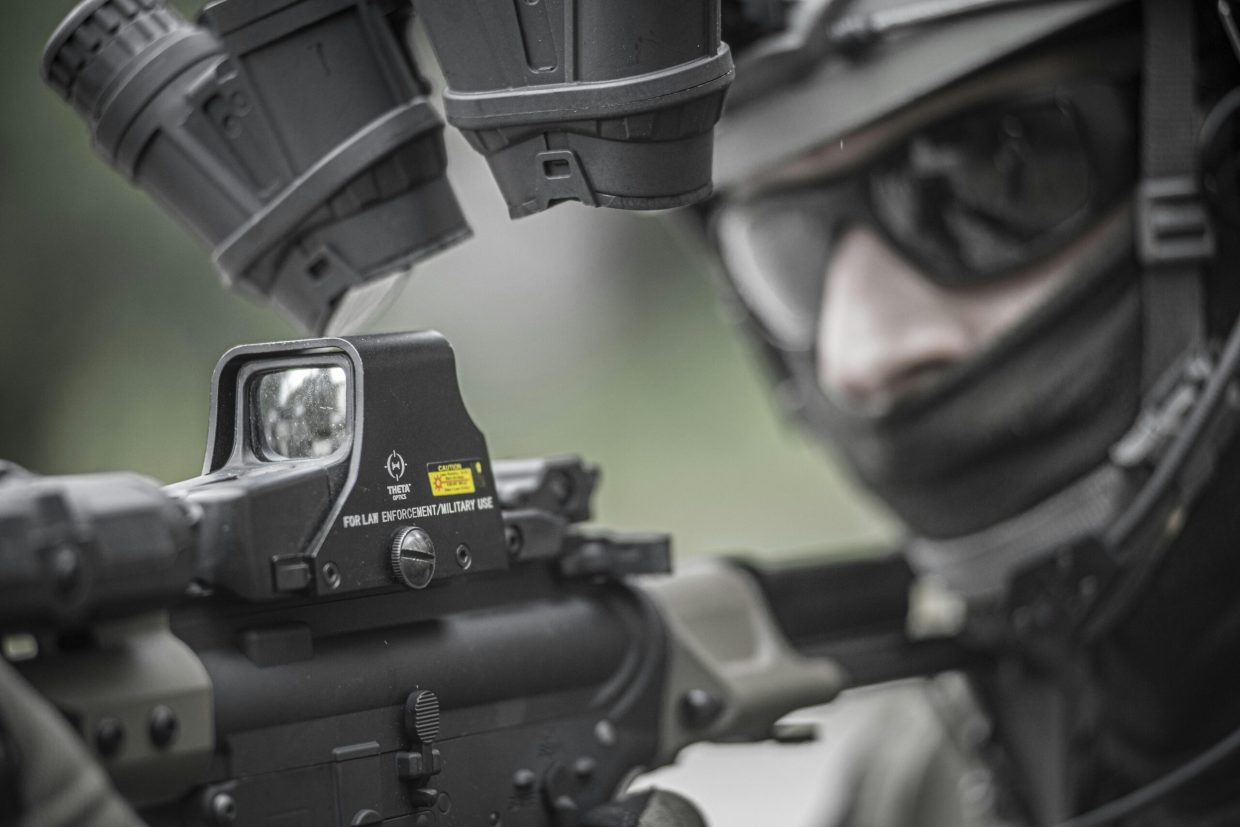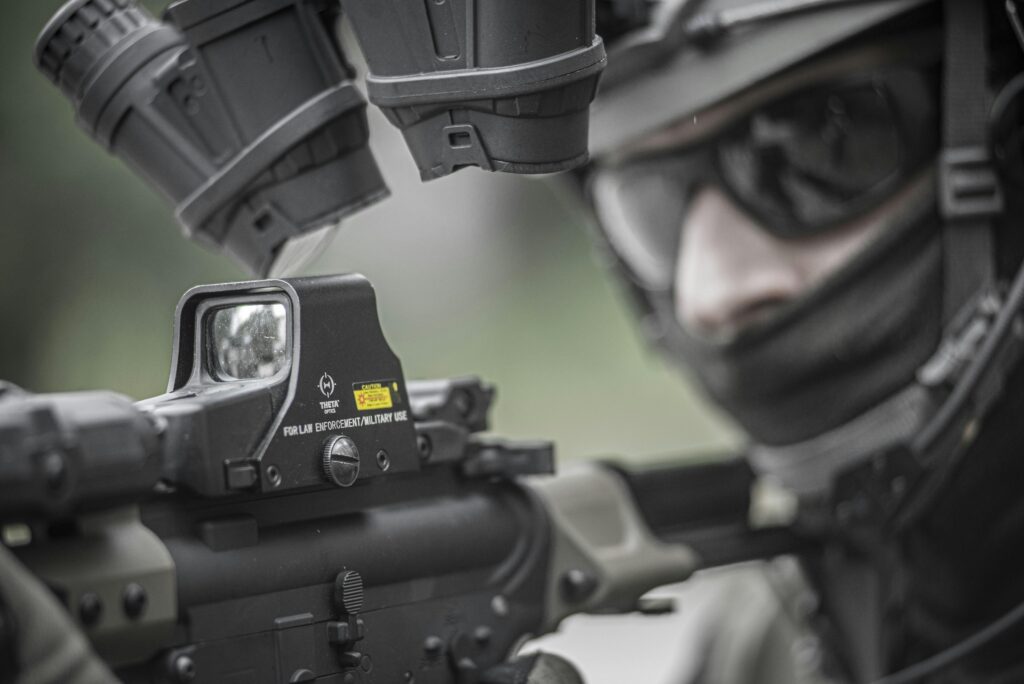In recent decades, the evolution of military communication devices has undergone significant transformations, driven by the imperative for secure, reliable, and rapid information exchange in complex operational environments. Advancements in digital signal processing, encryption technologies, and network-centric architectures have collectively enhanced the effectiveness and resilience of battlefield communication systems. This technical review provides a comprehensive analysis of the latest innovations in military communication devices, examining their underlying technologies, operational capabilities, and integration challenges. Emphasis is placed on developments in software-defined radios, tactical data links, and secure satellite communications, with an objective assessment of their impact on command and control frameworks. Through a detailed exploration of these cutting-edge technologies, this article aims to inform defense professionals and technical specialists of current trends shaping the future of military communications.
Table of Contents
- Evolution of Secure Military Communication Protocols and Encryption Techniques
- Integration of Artificial Intelligence in Tactical Communication Systems
- Enhancements in Ruggedized Hardware for Extreme Operational Environments
- Strategic Recommendations for Future Military Communication Device Development
- Concluding Remarks
Evolution of Secure Military Communication Protocols and Encryption Techniques
The trajectory of military communication protocols has been profoundly shaped by the imperative need for security and reliability under diverse operational constraints. Early analog systems, vulnerable to interception and signal degradation, gave way to digital frameworks that introduced advanced error correction and encryption algorithms. The integration of Frequency-Hopping Spread Spectrum (FHSS) and Direct Sequence Spread Spectrum (DSSS) technologies substantially enhanced resistance to jamming and eavesdropping. More recently, protocols have incorporated quantum-resistant cryptographic algorithms to future-proof communications against emerging computational threats posed by quantum computing. These protocols are rigorously tested for resilience in contested electromagnetic environments, ensuring uninterrupted command and control capabilities even in electronic warfare scenarios.
The evolution of encryption techniques parallels these protocol advancements, progressing from simple substitution ciphers to sophisticated symmetric and asymmetric key systems. Military-grade encryption now typically employs 256-bit AES (Advanced Encryption Standard) combined with dynamic key management procedures that allow for rapid re-keying in the field, minimizing exposure windows. Furthermore, layered encryption models utilizing multiple algorithms in cascade provide redundancy and complicate unauthorized decryption efforts. Key innovations also include the use of hardware security modules (HSMs) embedded within communication devices, ensuring cryptographic operations are both tamper-resistant and isolated from external threats. Collectively, these advancements foster secure, agile communication networks capable of supporting high-tempo, multi-domain operations globally.
Integration of Artificial Intelligence in Tactical Communication Systems
Recent developments in artificial intelligence have revolutionized the operational capabilities of military communication systems. By integrating machine learning algorithms directly into tactical radios and network nodes, these systems can dynamically optimize signal routing, enhance encryption protocols, and predict potential signal jamming attempts. The implementation of AI-driven adaptive waveform technology enables devices to automatically select the best frequency bands and modulation schemes, significantly improving resilience and communication clarity in hostile or congested environments.
Key enhancements brought by AI integration include:
- Automated threat detection and response to cyber and electronic warfare attacks
- Real-time language translation and voice recognition for multilingual battlefield coordination
- Self-healing network architectures that maintain connectivity despite node failures or environmental disruptions
- Data prioritization algorithms that ensure critical command and control messages are transmitted with minimal latency
This convergence of AI and tactical communications not only augments situational awareness but also empowers commanders with actionable intelligence, drastically reducing decision-making cycles under combat conditions.
Enhancements in Ruggedized Hardware for Extreme Operational Environments
Modern military communication devices are now incorporating advanced ruggedized hardware components tailored specifically for extreme operational environments. These devices feature reinforced enclosures constructed from aerospace-grade aluminum alloys coupled with polymer composites, offering exceptional resistance to physical shocks, corrosion, and electromagnetic interference. Enhanced sealing technologies such as NEMA and IP67/IP68 standards ensure complete protection against dust, water, and contaminants, making these systems deployable in harsh conditions ranging from arctic cold to desert heat. Furthermore, innovations in thermal management, including integrated heat sinks and phase-change materials, enable continuous operation without performance degradation under sustained high-temperature exposure.
Key improvements also focus on durability without compromising portability or ergonomic design. The latest iterations deploy multi-layer vibration dampening systems designed to sustain impact forces common in combat zones and rapid vehicle maneuvers. Connectivity modules now integrate resilient antenna technologies resistant to wear and mechanical stress, ensuring consistent signal integrity even in dense urban or mountainous terrains. These advancements are supported by low-power consumption architectures that extend battery life while maintaining ruggedness, facilitating longer mission endurance and reduced logistical burdens for field operators.
- High-grade materials for structural strength and corrosion resistance
- Advanced sealing meeting stringent military standards
- Thermally optimized designs for extreme temperatures
- Ergonomic yet ruggedized form factors
- Enhanced vibration and shock absorption mechanisms
- Resilient antenna and connectivity technologies
- Energy-efficient components for prolonged field use
Strategic Recommendations for Future Military Communication Device Development
To enhance the operational efficiency and security of next-generation military communication devices, it is imperative to prioritize adaptive, AI-driven signal processing techniques. These methodologies facilitate real-time encryption dynamics and interference mitigation, ensuring uninterrupted and secure data transmission even in contested electromagnetic environments. Furthermore, integrating multi-layered cybersecurity protocols at the hardware and software levels will proactively counteract emerging cyber threats, maintaining data integrity and confidentiality across all communication channels.
In addition, the deployment of modular architectures enabling rapid hardware upgrades and interoperability across diverse military platforms will significantly reduce lifecycle costs and improve logistical flexibility. Emphasis on energy-efficient, miniaturized components, combined with advanced power management systems, will extend operational endurance during prolonged missions. Future designs must also incorporate robust environmental resilience to withstand extreme climatic and electromagnetic conditions, ensuring reliable performance in all theaters of operation.
- AI-enhanced adaptive encryption and signal processing
- Comprehensive, hardware-level cybersecurity frameworks
- Modular, interoperable device architectures
- Energy-conscious design with advanced power management
- Resilience against extreme environmental stressors
Concluding Remarks
In conclusion, the continuous evolution of military communication devices underscores the critical role of advanced technology in modern defense operations. Emerging innovations in signal processing, encryption protocols, and network integration not only enhance operational efficiency but also significantly improve security and resilience against electronic warfare threats. As the battlefield becomes increasingly digitized, the development and deployment of sophisticated communication systems remain paramount to maintaining strategic advantage and mission success. Ongoing research and rigorous testing will be essential to address the complex challenges inherent in military communications, ensuring that future solutions meet the stringent demands of reliability, interoperability, and secure information exchange in diverse combat environments.













